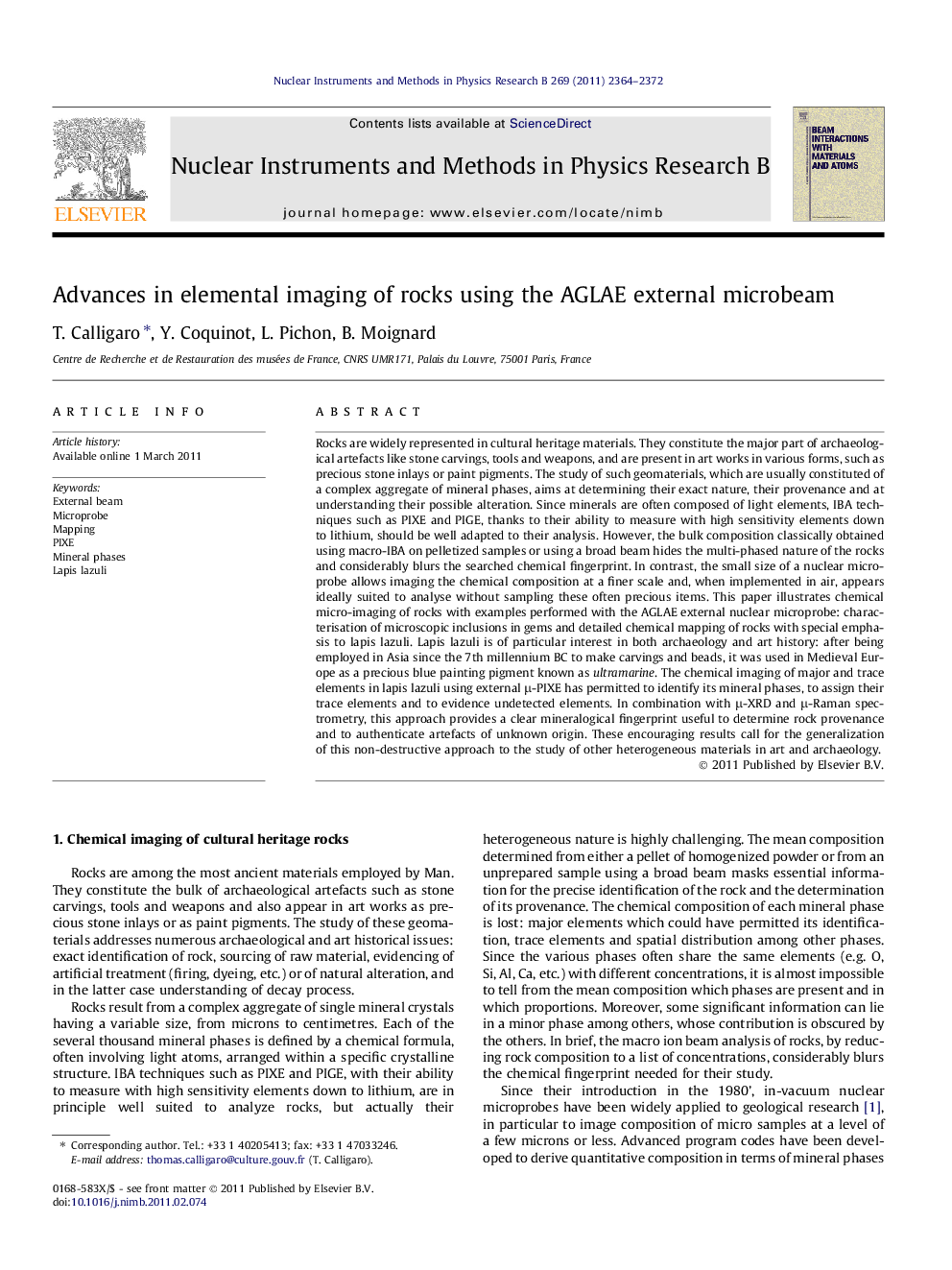| Article ID | Journal | Published Year | Pages | File Type |
|---|---|---|---|---|
| 10674719 | Nuclear Instruments and Methods in Physics Research Section B: Beam Interactions with Materials and Atoms | 2011 | 9 Pages |
Abstract
Rocks are widely represented in cultural heritage materials. They constitute the major part of archaeological artefacts like stone carvings, tools and weapons, and are present in art works in various forms, such as precious stone inlays or paint pigments. The study of such geomaterials, which are usually constituted of a complex aggregate of mineral phases, aims at determining their exact nature, their provenance and at understanding their possible alteration. Since minerals are often composed of light elements, IBA techniques such as PIXE and PIGE, thanks to their ability to measure with high sensitivity elements down to lithium, should be well adapted to their analysis. However, the bulk composition classically obtained using macro-IBA on pelletized samples or using a broad beam hides the multi-phased nature of the rocks and considerably blurs the searched chemical fingerprint. In contrast, the small size of a nuclear microprobe allows imaging the chemical composition at a finer scale and, when implemented in air, appears ideally suited to analyse without sampling these often precious items. This paper illustrates chemical micro-imaging of rocks with examples performed with the AGLAE external nuclear microprobe: characterisation of microscopic inclusions in gems and detailed chemical mapping of rocks with special emphasis to lapis lazuli. Lapis lazuli is of particular interest in both archaeology and art history: after being employed in Asia since the 7th millennium BC to make carvings and beads, it was used in Medieval Europe as a precious blue painting pigment known as ultramarine. The chemical imaging of major and trace elements in lapis lazuli using external μ-PIXE has permitted to identify its mineral phases, to assign their trace elements and to evidence undetected elements. In combination with μ-XRD and μ-Raman spectrometry, this approach provides a clear mineralogical fingerprint useful to determine rock provenance and to authenticate artefacts of unknown origin. These encouraging results call for the generalization of this non-destructive approach to the study of other heterogeneous materials in art and archaeology.
Related Topics
Physical Sciences and Engineering
Materials Science
Surfaces, Coatings and Films
Authors
T. Calligaro, Y. Coquinot, L. Pichon, B. Moignard,
